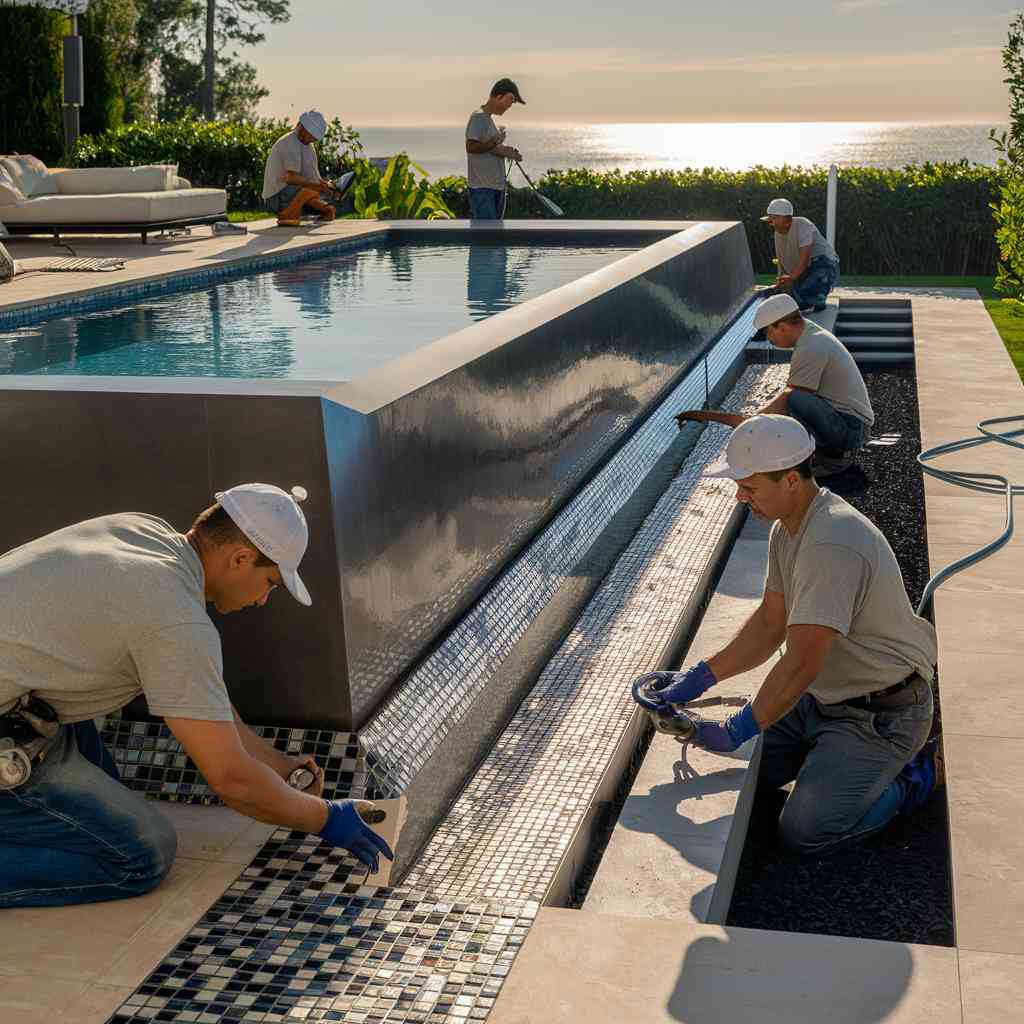
Designing and installing an inground pool is a significant home improvement project that combines architectural aesthetics with practical considerations of materials, maintenance, and usage. Expert inground pool installers offer invaluable insights that can transform this process from daunting to manageable. This article explores top design tips shared by these professionals, covering everything from defining the primary purpose of your pool to selecting the most suitable materials. These tips are intended to help homeowners make informed decisions, thereby enhancing the longevity and enjoyment of their investment.
Understanding Your Pool’s Purpose
The first step in the pool design process is to clearly define the intended purpose of your inground pool. This purpose significantly influences its size, shape, and features. For instance, if the pool is meant for exercise, a rectangular shape suitable for swimming laps is ideal. In contrast, a leisure-focused pool might include integrated seating, a jacuzzi, or even a shallow lounging area. The intended use also impacts additional features such as diving boards, slides, or waterfalls, which can enhance the pool’s functionality and enjoyment.
Tips for Selecting Pool Materials
Choosing the right materials for your pool is a critical step in creating a long-lasting and aesthetically pleasing inground pool. The selection process should consider factors like durability, maintenance, cost, and aesthetics. Here are the most common materials used:
- Concrete: Known for its durability and customization options, concrete pools can be tailored to any shape or size. However, they require regular maintenance to prevent cracks and wear.
- Vinyl: This material is cost-effective and smooth to the touch, making it comfortable for swimmers. However, vinyl liners can be prone to punctures and may need replacement over time.
- Fiberglass: Fiberglass pools are easy to maintain and quick to install. They come in pre-fabricated shapes and sizes, offering less flexibility in design compared to concrete.
Conducting a thorough analysis of these materials in relation to your specific needs and preferences is vital for ensuring a successful inground pool project.
https://ingroundpoolinstaller.blogspot.com/2024/06/cutting-edge-design-trends-suggested-by.html
Embracing Advanced Features and Technologies
Modern pools are not just about basic functionality; they incorporate advanced features and technologies that enhance the swimming experience. Here are some innovative trends recommended by experts:
- Infinity Pools: Known for their seamless edge, these pools create an illusion of water merging with the horizon, providing a luxurious and visually stunning effect.
- LED Lighting: Adding LED lights to your pool can create a magical ambiance and improve safety by illuminating the water at night.
- Automated Systems: Modern pools often come with automated systems that control various features like heating, filtration, and cleaning, providing convenience and efficiency.
Customizing Your Pool Design
One of the most exciting aspects of installing an inground pool is the ability to customize its design to fit your personal style and needs. From selecting the shape and size to choosing finishes, tiles, and water features, every detail can be tailored to create a unique and personal space. Waterfalls, fountains, and custom lighting can add a touch of luxury and enhance the overall ambiance of the pool area.
Landscaping around the pool is equally important. Incorporating plants, trees, and hardscaping elements such as decks and patios can create a cohesive and inviting outdoor environment. Consider how the pool area will be used and plan spaces for lounging, dining, and entertaining.
Effective Communication with Your Installer
Effectively conveying your design ideas to your inground pool installer requires clear and detailed communication. Use sketches, photographs, color samples, and material swatches to illustrate your vision. Encourage dialogue, ask questions, and seek clarifications to ensure that your ideas are accurately translated into a tangible design. Establishing an open line of communication fosters a sense of partnership and shared ownership of the project.